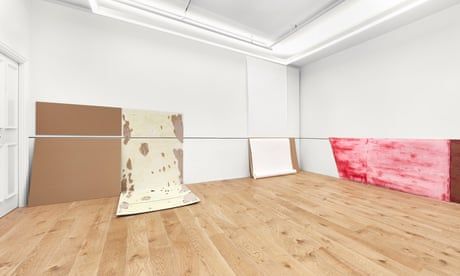
Bernheim Gallery, London
Now aged 95, the great polymath had trouble finding the right chipboard in Britain – but this is still a show of disarming simplicity with one stunning standout work
Sometimes a work gets to you and blows everything else away. It begins with a narrow black line, about the breadth of a pencil, running at waist-height around the walls of the ground floor gallery. The line negotiates the mouldings, runs under a mantelpiece, takes the corners and recesses, makes a turn, gets interrupted by a set of French doors and disappears from view. The line leads us from room to room. Regular, unvarying and relentless, it sometimes leaves a breathy residue on the wall or a build-up of fine graphite dust in the corners and crevices of a window-frame as it passes.
Drawn using fine charcoal powder and fixative, the line at times appears to have been incised in the wall rather than just sitting on top of the paintwork. Sometimes it looks like a cut, as if someone has sawn through the entire building, making me think of Gordon Matta-Clark’s chain-sawed buildings. The only other thing in this bare room is Dorothea Rockburne’s 1967 Tropical Tan, a group of four abutted black steel panels leaning against the wall and reaching above our heads. The panels look flat, but each steel sheet is precisely bent on its four diagonals, the angles muted and disguised by a layer of pallid wrinkle-finish paint. The line runs behind the panels, re-emerges on the other side and carries on, oblivious, dragging me with it. Unlike me, the line never hesitates. Even when you can’t see it the line is there, as present as an invisible horizon. It is always with us. Like the line itself, the questions keep on coming.
Continue reading...